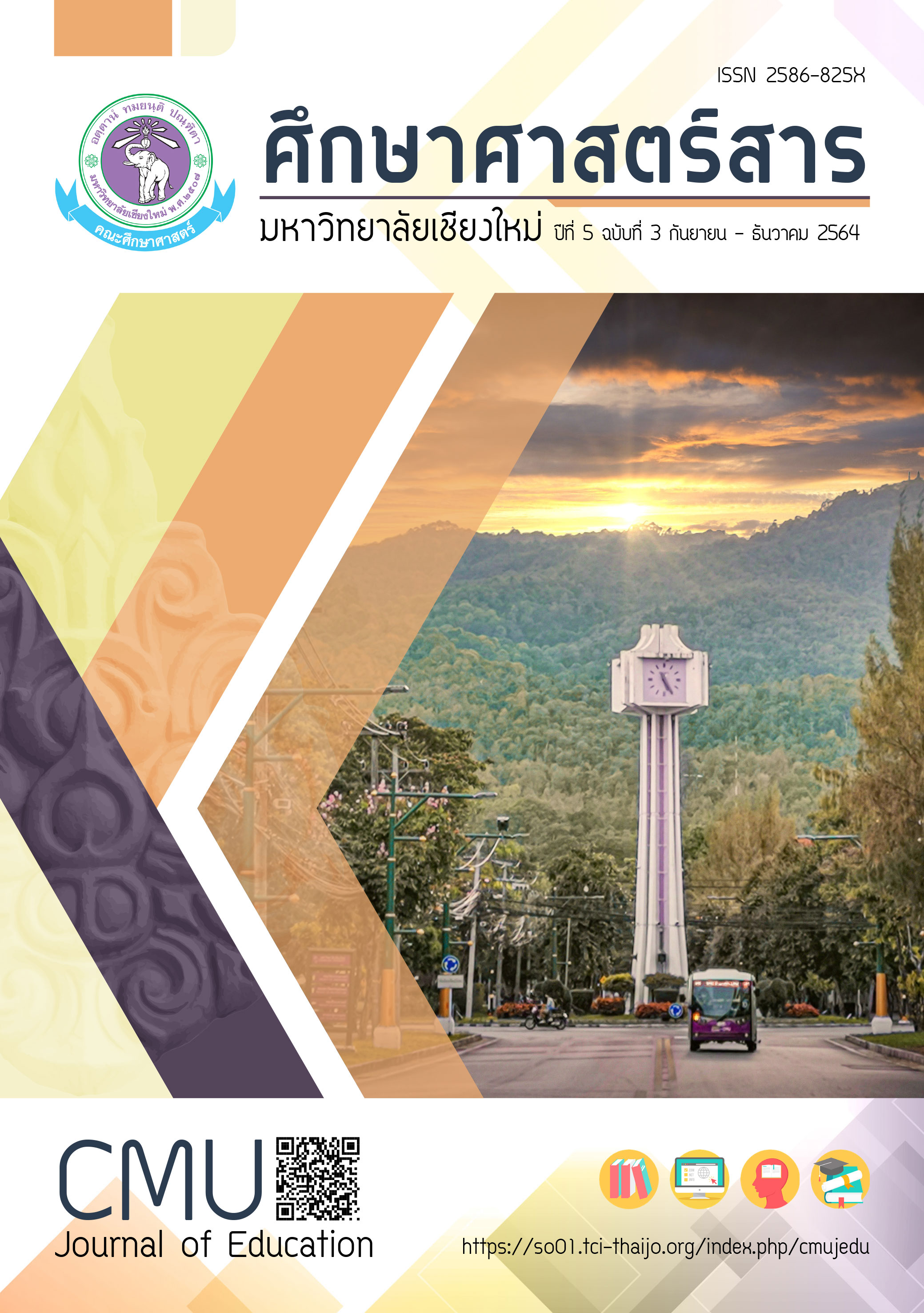สำรวจความเข้าใจเกี่ยวกับการเกิดกระแสไฟฟ้าไหลวน ของนักเรียนระดับชั้นมัธยมศึกษาปีที่ 6
Main Article Content
บทคัดย่อ
ความรู้เรื่องกระแสไฟฟ้าไหลวนมีการนำไปใช้ในการพัฒนาเทคโนโลยีที่หลากหลายมากขึ้น ดังนั้นในงานวิจัยนี้จึงได้สร้างแบบทดสอบเพื่อสำรวจความเข้าใจของนักเรียนชั้นมัธยมศึกษาปีที่ 6 โรงเรียนกรุงเทพคริสเตียนวิทยาลัย จำนวน 124 คน เกี่ยวกับการเกิดกระแสไฟฟ้าไหลวนและการใช้กฎมือขวาระบุทิศทางของกระแสไฟฟ้าไหลวนบนแผ่นโลหะ ผลการสำรวจพบว่ามีจำนวนนักเรียนที่มีระดับความเข้าใจที่ถูกต้องสมบูรณ์ (SU) คิดเป็นร้อยละเฉลี่ย 13.44 และพบนักเรียนจำนวนมากที่มีระดับความเข้าใจที่คลาดเคลื่อน (SAC) คิดเป็นร้อยละเฉลี่ย 67.81 ยังพบว่ามีนักเรียนเพียง 2-4 คนเท่านั้นที่สามารถระบุทิศทางของกระแสไฟฟ้าไหลวนบนแผ่นโลหะได้ถูกต้อง แสดงให้เห็นว่านักเรียนส่วนใหญ่ไม่เข้าใจการเกิดกระแสไฟฟ้าไหลวน จากผลการศึกษานี้สามารถนำไปพัฒนาการจัดการเรียนรู้เพื่อแก้ไขความเข้าใจที่คลาดเคลื่อนไปสู่การเกิดความเข้าใจที่ถูกต้องทางวิทยาศาสตร์และเกิดเจตคติที่ดีต่อการเรียนวิชาฟิสิกส์ในอนาคตได้
Article Details

อนุญาตภายใต้เงื่อนไข Creative Commons Attribution-NonCommercial-NoDerivatives 4.0 International License.
หากผู้เสนอบทความมีความจำเป็นเร่งด่วนในการตีพิมพ์โปรดส่งลงตีพิมพ์ในวารสารฉบับอื่นแทน โดยกองบรรณาธิการจะไม่รับบทความหากผู้เสนอบทความไม่ปฏิบัติตามเงื่อนไขและขั้นตอนที่กำหนดอย่างเคร่งครัด ข้อมูลของเนื้อหาในบทความถือเป็นลิขสิทธิ์ของ Journal of Inclusive and Innovative Education คณะศึกษาศาสตร์ มหาวิทยาลัยเชียงใหม่
เอกสารอ้างอิง
ธวัชชัย สายสนิท และ วิริยะ คชพงษ์. (2556). กรณีศึกษาระบบการเบรกรถไฟฟ้าบีทีเอส ของ บริษัท ระบบขนส่งมวลชน กรุงเทพ จำกัด (มหาชน) (วิทยานิพนธ์ปริญญาวิศวกรรมศาสตรบัณฑิต). ภาควิชาวิศวกรรม สาขาวิชาวิศวกรรมไฟฟ้า คณะวิศวกรรมศาสตร์ มหาวิทยาลัยสยาม.
Çalik, M., Ayas, A. and Coll, K. R. (2008). Investigating the Effectiveness of an Analogy activity in Improving students’ Conceptual change for solution Chemistry concepts. International Journal of Science and Mathematics Education, 7, 651-676.
Guisasola, J., Almudi, J.M. and Zuza, K. (2013). University Students’ Understanding of Electromagnetic Induction. International Journal of Science Education, 35, 2692-2717.
Hasegawa, I. and Uchida, S. (1999). Braking System. Japan Railway & Transport Review, 20, 52-59.
J A Molina-BolÍvar and A J Abella-Palacios. (2012). A laboratory activity on the Eddy Current brake. European Journal of Physics, 33, 697-707.
Jelicic, K., Planinic, M. and Planinsic, G. (2017). Analyzing High School Students’ reasoning about Electromagnetic Induction. Physical Review Physics Education Research, 13, 010112(1) - 010112(18).
Maloney, D.P., O’Kuma, T.L., Hieggelke, C.J. and Heuvelen, A.V. (2001). Surveying Students’ Conceptual knowledge of Electricity and Magnetism. American Journal of Physics, 69, S12-S23.
Sağlam, M. and Millar, R. (2005). Diagnostic Test of Students’ Ideas in Electromagnetism (Research Paper). United Kingdom: Department of Educational Studies, University of York.
Sağlam, M. and Millar, R. (2006). Upper High School Students’ Understanding of Electromagnetism. International Journal of Science Education, 28, 543-566.
Thornton, R.K. and Sokoloff, D.R. (1998). Assessing Student learning of Newton’s law: The Force and Motion Conceptual Evaluation and the Evaluation of Active Learning Laboratory and Lecture Curricula. American Journal of Physics, 66, 338-352.
Zuza, K., Almudi, J.M., Leniz, A. and Guisasola, J. (2014). Addressing Students’ Difficulties with Faraday’s law: A guided problem-solving approach. Physical Review Physics Education Research, 10, 010122(1) - 010122(16).


